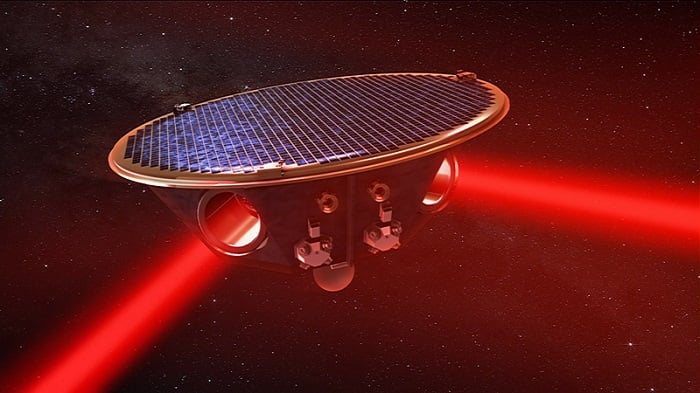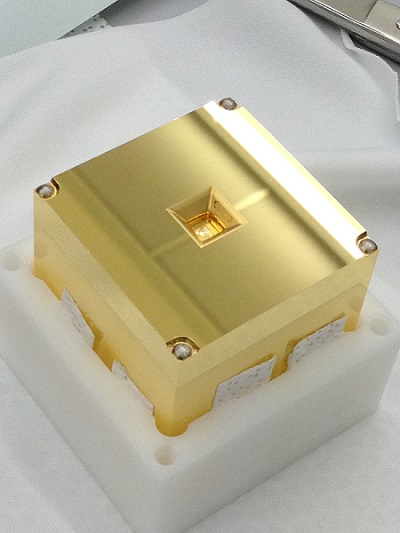
NASA to Support the ESA's Efforts on Gravitational Wave Observatory
NASA will collaborate with the European Space Agency (ESA) on a space-based observatory designed to detect gravitational waves. The ESA formally adopted the Laser Interferometer Space Antenna (LISA) to its mission lineup, with launch slated for 2035.
The construction of the instruments and spacecraft will begin in 2025 once a European industrial contractor has been selected, the ESA said.
Gravitational waves were first detected in 2015 by the Laser Interferometer Gravitational Wave Observatory (LIGO) following the merger of two black holes. Along with other ground-based facilities, LIGO has since observed dozens of these mergers, as well as other gravitational-wave producing phenomena.

The Laser Interferometer Space Antenna (LISA) mission, led by the European Space Agency (ESA) with NASA contributions, will detect gravitational waves in space using three spacecraft, separated by more than a million miles, flying in a triangular formation. Lasers fired between the satellites, shown in this artist's concept, will measure how gravitational waves alter their relative distances. Courtesy of AEI/MM/Exozet.
Ira Thorpe, the NASA study scientist for the LISA mission at the agency’s Goddard Space Flight Center, said that LISA's design enables it to sense low-frequency gravitational waves that Earth-based instruments cannot detect. “These sources encompass tens of thousands of small binary systems in our own galaxy, as well as massive black holes merging as galaxies collided in the early universe,” he said.
NASA will provide several key components of LISA’s instrument suite, along with science and engineering support. Contributions will include ultra-stable lasers, 30-cm telescopes, and sources of UV light to discharge test mass components. LISA will use this equipment as it measures precise distance changes caused by gravitational waves over millions of kilometers of space. ESA will provide the spacecraft and oversee the international team during the development and operation of this mission.
LISA, a constellation comprising three spacecrafts, will trail the Earth in its orbit around the sun, forming an equilateral triangle in space. Gravitational waves from sources throughout the universe will produce oscillations in the lengths of the triangle’s 2.5 million km-long arms, and LISA will capture these changes. The spacecraft will track internal test masses affected only by gravity, and at the same time will continuously fire lasers to measure the spacecraft’s separations to within a span smaller than the size of a helium atom.
The test masses are pairs of solid gold-platinum cubes free-floating in special housing at the heart of each spacecraft. Gravitational waves will cause tiny changes in the distances between the masses in the different spacecraft, and the mission will track these variations using laser interferometry.

The three spacecraft of the LISA mission will each host two gold-platinum cube test masses. The apparatuses are free-floating and contained within an electrode housing. Gravitational waves can be discovered when the distance between the cubes in different spacecraft changes. LISA will track these changes by exchanging laser beams between adjacent pairs of spacecraft. Courtesy of ESA.
The underlying measurement technology was demonstrated in space with ESA’s LISA Pathfinder mission, which operated between 2015 and 2017.
Key instrumental elements for the ESA-led LISA mission include the free-falling test masses shielded from external forces, provided by Italy and Switzerland; the picometer-accuracy systems to detect the interferometric signal, provided by Germany, the U.K., France, the Netherlands, Belgium, Poland, and the Czech Republic; and the Science Diagnostics Subsystem of sensors, located across the spacecraft and provided by Spain.
/Buyers_Guide/NASA_Space_Communications_Navigation/c32971